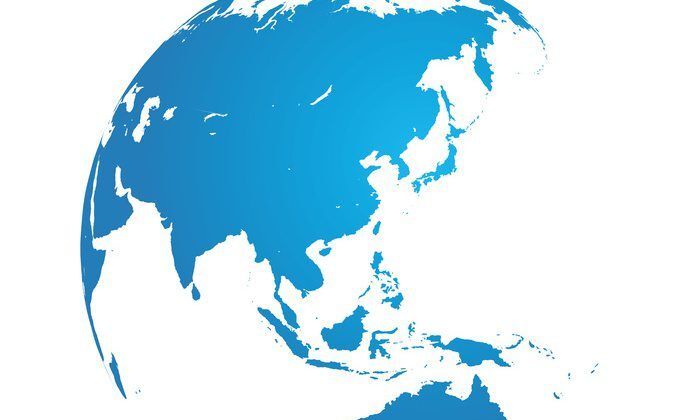Every day produces a fresh crop of alarming headlines about the security situation in Asia. Here’s a sample just from this weekend: “Abe says Japan ready to counter China’s Power” (Wall Street Journal); “Japan scrambles jets amid China dispute” (Financial Times); “Tokyo’s incitement incurs dangerous cycle” (Global Times).
Instead of getting sucked into the day-to-day drama, I think we all need to calm down and take a step back. Personally, when I envision Asia’s future, my starting point is rooted very much in the past. It’s the opening sentence of The Ideals of the East, a book that art historian Tenshin Okakura wrote in 1904.
“Asia is one,” he famously said.

In Okakura’s day, the Western powers had colonized most of Asia. That gave his book a twofold goal: 1) to prove to the West that Asia, though technologically backward at that moment, had great civilization; and 2) to encourage Asians to feel pride in their civilization.
Now that Asia is independent and thriving economically, we need to renew our commitment to Okakura’s idea of a united Asia.
We should start by recognizing that Asia’s current prosperity is the result of cooperation. The “flying geese model” of the immediate postwar decades—with Japan driving development, closely followed by Korea, Hong Kong, Taiwan and Singapore, then the other ASEAN nations—created a mutually beneficial “prosperity cascade,” with lower value-added tasks flowing down the formation, ultimately enriching all nations.
Starting in 1978, the economic liberalization of China gave a further big boost to Asia’s economic expansion and interdependence. Currently Asia accounts for more than 30% of the world GDP—and that figure is expected to exceed 50% by 2050.
Of course, it’s not all been smooth sailing. The region had to digest the bursting of Japan’s bubble economy in the 1990s; the 1997 Asian financial crisis; and the 2008 Lehman Shock. But despite these disruptions, Asia has only grown more prosperous—and more economically interdependent.
Apple’s iPhone and iPad exemplify this latter trend: Crammed with high value-added components from Japan (Toshiba, Sharp, Murata, etc.) and Korea (Samsung and LG), the devices are assembled by a Taiwanese company (Foxconn) in China. You can’t get much more integrated than that!
Free trade agreements (FTA) can help sustain the momentum for even closer economic integration. First there was ASEAN, then ASEAN+1, ASEAN+3, and ASEAN+6. (This last agreement will establish the world’s largest free-trade area covering over half the world’s population.) Japan, China, and South Korea are also discussing setting up a trilateral free trade pact of their own. Meanwhile, the Trans-Pacific Partnership (TPP) will unite several Asian countries with Canada, the U.S., Mexico, Peru, and Chile on the other side of the Pacific.
As an entrepreneur, I welcome this welter of initiatives. Why? Because opening markets is always a good thing; because the larger the free-trade area we end up creating, the better; and because competition among multiple FTAs should help break up individual logjams and so expedite the whole process.
Asian trade relationships are clearly evolving with the times. Economic integration looks unstoppable. Sadly, things in the diplomatic sphere couldn’t be more different. There, the fraught China-Japan and Korea-Japan relationships remain resolutely stuck in the past.
What can we, as individuals, do about this?
I believe it is important for each of us to try to foster better understanding at the grassroots level. Crucial here is refusing to shy away from tackling awkward, semi-taboo subjects. For instance, I make a point of discussing the disputed Senkaku/Diaoyu Islands (main cause of the current friction) and Japanese politicians’ controversial visits to Yasukuni Shrine with my Chinese friends. Equally, when I get together with my Korean friends, I’m not afraid to broach our two countries’ difficult history, particularly the whole “comfort women” problem.
Discussing these hot-button issues produces a paradoxical result: it brings us closer as we learn to understand and respect each other’s points of view.
Anyone from Asia who has had the experience of studying abroad will have noticed how Asians tend naturally to stick together. We feel comfortable with one another. We quickly make friends.
The time has now come for people from Asia to start actively self-identifying as Asians. Defining ourselves as belonging exclusively to one country brings along too much negative baggage. Patriotism shades into nationalism, history into propaganda, and collaboration gets shunted aside by confrontation.
On a professional and a personal level, I am doing what I can to help realize Okakura’s “one Asia” vision. For example, GLOBIS has students and faculty from China and Korea, not to mention a branch in Shanghai. In public forums such as the recent World Knowledge Forum in Seoul, I actively expound my philosophy of Asia coming together through business, cultural, and social interaction.
Regional tensions may make for splashy headlines, but while our politicians remain trapped in standoffs, we, as individuals, can do our best at the grassroots level to bring Asia together before it tears itself apart.
That’s why I say, we are all Asians now.



